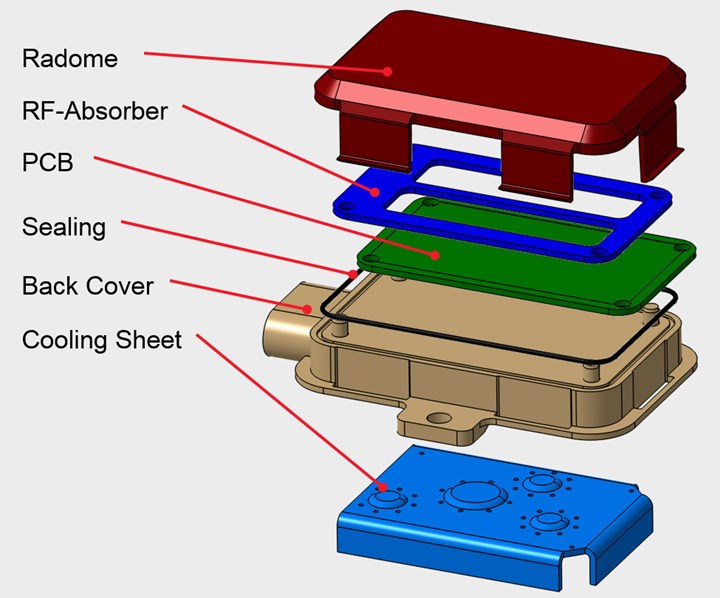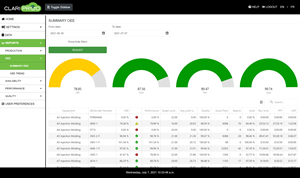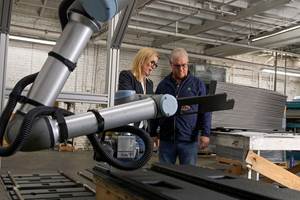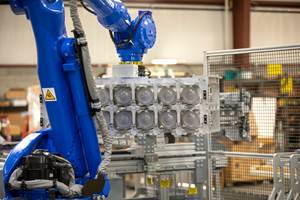Lanxess Develops Concept for Radar Sensors with Integrated Thermal Management
Using its high-performance thermoplastics, Lanxess’ thermal management concept is aimed at autonomous driving.
A new concept for radar sensors with integrated thermal management that will benefit autonomous driving has been developed by Lanxess. While there is still a long way to go, driver assistance systems are increasingly set to become a key feature of future generations of cars, and 360-degree monitoring of the vehicle’s surroundings is enabled by radar waves, among other things.
The radar sensors are an essential component of distance control, lane change monitoring, collision avoidance, and blind spot monitoring systems. As the sensors have to be dust- and water-proof, they are designed as fully-enclosed systems. But this makes it difficult for heat to be effectively dissipated from the inside which can impair the performance of the electronics and durability of the sensors. Said Gregor Jaschkewitz, application developer in Lanxess’ High Performance Materials (HPM), “This is why we developed a concept that allows heat to be dissipated by means of thermally conductive plastics in combination with metallic cooling elements. The individual sensor components are assembled using integrated snap fits and hot rivets, a process that is much less costly and time-consuming than using screws.”
For a radar sensor, Lanxess’ concept involves the following individual components: a front cover (“radome”), radar absorber, printed circuit board (PCB) including antennas, and back cover with an integrated cooling element. The radome faces away from the vehicle and has to be made from a plastic offering a high degree of transmission for the radar waves. PBT is a well suited material here because it has a low dielectric constant (Dk) and loss factor (Df).

The back cover is the most complex part of the whole assembly. It is manufactured in a plastic-metal compound (hybrid) technique with nylon 6 and a metallic cooling element. This enables engineers to leverage the huge design freedom offered by the injection molding process, allowing them to integrate features such as reinforcement and cooling ribs as well as slots for connectors and the strain-relieved attachment of cables. Most importantly of all, however, the surface of the metallic cooling element can be overmolded with thin areas of plastic. “The heat generated on the electronic components of the PCB can be efficiently dissipated from the whole assembly through these plastic areas. This effect is supported by thermally conductive nylon 6 from our Durethan BTC product range as injection molding material,” says Jaschkewitz. Nylon 6 is also extremely tough and ductile. Another benefit of the hybrid design is that the metallic cooling element shields the electronics inside the radar sensor against electromagnetic radiation, which means that its function is not impaired by external radiation. The assembly can be sealed with O-rings or sealing lips created in a two-component injection molding process.
With most concepts for plastic radar sensors, the radome and back cover have always traditionally been made from thermoplastics that can be welded to each other to create a fully enclosed assembly. This generally meant that the same plastics had to be used for joining.the two components. “Our approach, however, places fewer restrictions on the choice of materials and makes it easier to use tailor-made compounds,” said Jaschkewitz.
Benefiting from the knowhow of a global development partner, Lanxess believes that sensors for driver assistance systems will offer a wealth of opportunities for its Durethan nylons and Pocan polyesters. “We want to benefit from the huge growth potential in this application segment and advance technological innovation with our own ideas – like the concept for radar sensors,” said Dr. Christopher Hoefs, a global application development expert in HPM. For example, the business unit also recently unveiled a concept for the modular design of charging connections for electric vehicles. HPM has pooled its extensive knowhow in material, application, process and technology development under the HiAnt brand in order to support partners and customers in projects. Said Hoefs, “We are supporting our partners at all stages of application development – from concept design, material optimization and mechanical and rheological simulation through to component testing and the start of series production.”
Related Content
Real-Time Production Monitoring as Automation
As an injection molder, Windmill Plastics sought an economical production monitoring system that could help it keep tabs on its shop floor. It’s now selling the “very focused” digital supervisor it created, automating many formerly manual tasks.
Read MoreA Cost Saving Modular Approach to Resin Drying Automation
Whether implementing a moisture-sensing closed-loop system for a single dryer, or automating an entire plant, technology is available to take the guesswork and worry out of resin drying. Using a modular approach allows processors to start simple and build more capabilities over time.
Read MoreCobot Creates 'Cell Manufacturing Dream' for Thermoformer
Kal Plastics deploys Universal Robot trimming cobot for a fraction of the cost and lead time of a CNC machine, cuts trimming time nearly in half and reduces late shipments to under 1% — all while improving employee safety and growth opportunities.
Read MoreAn Automation 'First' for Non-Servo-Eject Trim Presses
Compact, flexible and configurable robotic system is said to be the first to enable thermoformers to fully automate product handling after a non-servo trim press.
Read MoreRead Next
People 4.0 – How to Get Buy-In from Your Staff for Industry 4.0 Systems
Implementing a production monitoring system as the foundation of a ‘smart factory’ is about integrating people with new technology as much as it is about integrating machines and computers. Here are tips from a company that has gone through the process.
Read MoreLead the Conversation, Change the Conversation
Coverage of single-use plastics can be both misleading and demoralizing. Here are 10 tips for changing the perception of the plastics industry at your company and in your community.
Read MoreProcessor Turns to AI to Help Keep Machines Humming
At captive processor McConkey, a new generation of artificial intelligence models, highlighted by ChatGPT, is helping it wade through the shortage of skilled labor and keep its production lines churning out good parts.
Read More


























